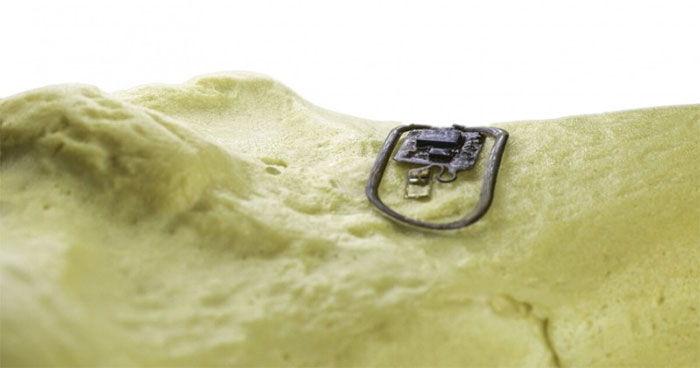Wireless device that monitors bone health
Researchers at the University of Arizona (USA) have developed a micro-wireless device permanently linked to the bone capable of transmitting data out.
This breakthrough could allow doctors to monitor a patient's bone health in real time, or how well they are recovering from an injury.

The device could be implanted in people with conditions such as osteoporosis.
The new invention is what the team calls a 'bone surface' device. The device contains a series of sensors that are inserted into an area the size of a coin and as thin as a sheet of paper. The sensors can transmit bone data to a smartphone or other device.
In particular, the device does not need a battery to run. Instead, power can be transmitted from the outside using near-field communication (NFC).
To keep the device attached to the bone for a long time, the team created an adhesive. This substance contains calcium phosphate particles, which allow bone to actually grow on it. As a result, the device can be permanently bonded to the bone. The devices are designed to be thin enough to not cause discomfort to the user when the muscles move.
The team expressed hope that such devices could be implanted in people with conditions such as osteoporosis. As a result, the device can monitor the patient's bone health in the long term. In addition, the device also has the ability to assist after the patient has broken a bone. This support will allow doctors to monitor how the bone heals.
Philipp Gutruf - co-author of the study - said: 'Being able to monitor the health of the musculoskeletal system is extremely important. With this interface, we basically have a computer on bones.
This technology platform allows us to create investigative tools for scientists. As a result, it is possible to discover how the musculoskeletal system works. It also helps to use the information gathered for recovery and therapy'.
The team tested the device on animals. The results show that the device can be implanted into large and small animal models. Data from the device can be read by a smartphone.
However, according to the scientists, this research is still in the early stages. It will take a long time to put this device into practice. The study was published in the journal Nature Communications.
- Headphones transmit sound through bones: What is it and how it works?
- The device charges wirelessly at a distance of 1m
- Automatic stirring device
- Tailio - A smart box that monitors your cat's health
- What is bone cancer?
- Already able to charge wireless phones remotely - Breaking the phone industry
- The device detects health abnormalities through ... sweat
- Small heart pacemakers and wireless charging
- The world's first 3D jaw bone graft surgery
- A battery-free device can still send messages
- World's smallest, lightest wireless transmitter
- The device helps people see Wifi waves with the naked eye
 13 causes of non-itchy rash
13 causes of non-itchy rash How the mouse with human ears changed the world?
How the mouse with human ears changed the world? The truth about 'fried rice syndrome!
The truth about 'fried rice syndrome! What is dental implant?
What is dental implant?